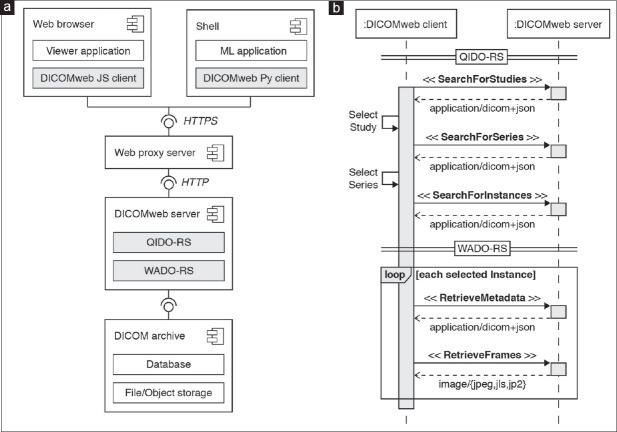Figure 6.
Querying and retrieving DICOM data sets from an archive through DICOMweb RESTful services. (a) Component diagram of DICOMweb client and server components as well as their respective interfaces. Client and server communicate over network using the HTTP. The client may be an interactive viewer application running in a web browser or a machine learning (ML) program running in a Unix shell. The server provides RESTful services for query and retrieval of DICOM objects: Query based on ID for DICOM Objects (QIDO-RS) and Web Access to DICOM Objects (WADO-RS). (b) Sequence diagram of DICOMweb client-server interactions for query and retrieval of DICOM objects. The client searches for studies (cases) or series (digital slides) resources via a SearchForStudies or SearchForSeries request, respectively. The client may provide query parameters to filter DICOM objects based on given attribute values. The server responds with resource representations for each matched object in JSON format according to the DICOM JSON model. The client retrieves image metadata resources from the server for each image (resolution level) belonging to the matched study or series through a RetrieveMetadata request. The server responds with metadata resource representations in DICOM JSON format for each image instance, which provide the client the necessary information to interpret the images and identify relevant frames (e.g., based on their position in the total pixel matrix or the slide coordinate system). The client requests a subset of frames from the server through a RetrieveFrames request. The server responds with a message containing the requested frames in the requested image format (e.g., JPEG, JPEG-LS, JPEG2000). JSON: JavaScript Object Notation, HTTP: Hypertext Transfer Protocol, library

